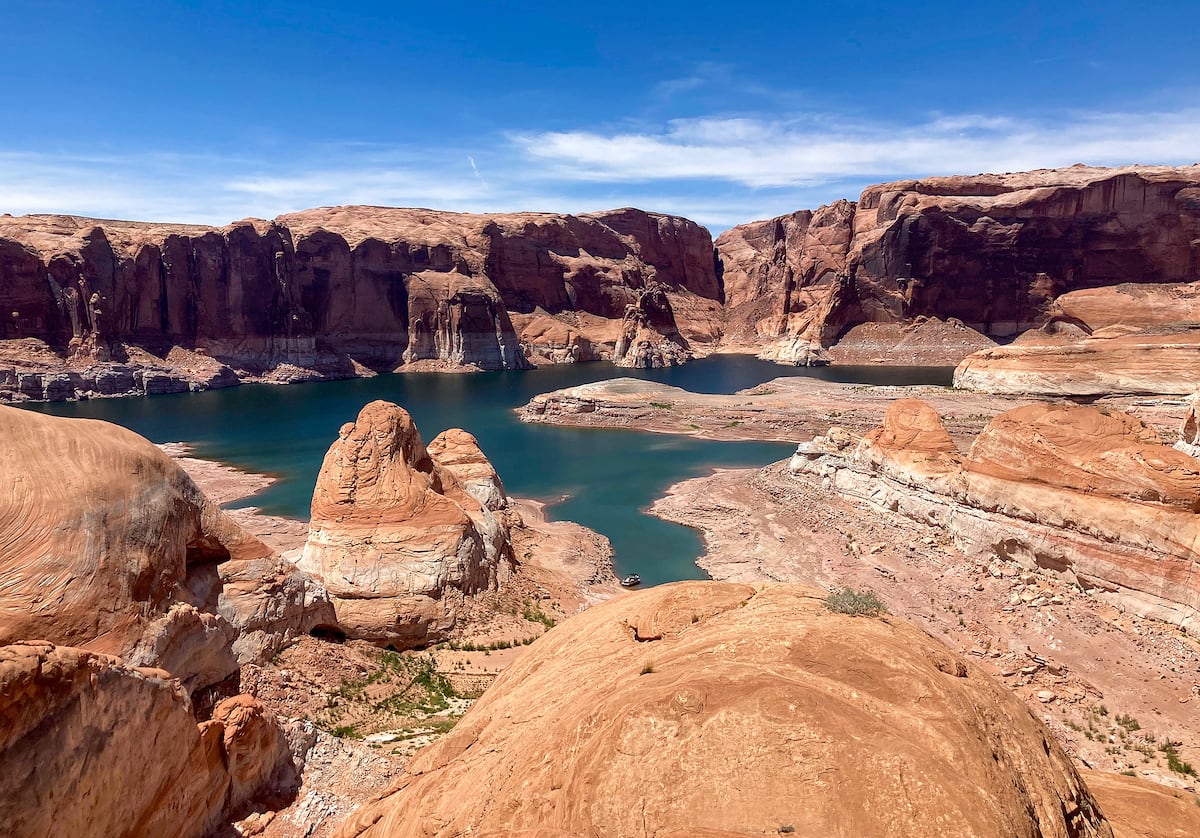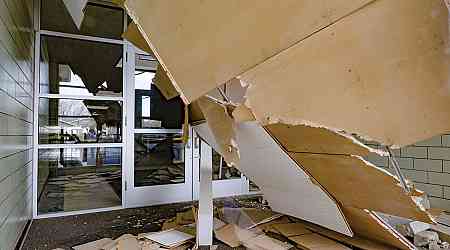Editor’s note • The following is an excerpt from the Salt Lake Tribune’s new Open Lands newsletter, a twice-a-month newsletter about Utah’s land, water and air from the environment team. For a sneak peek at what we’re working on and news we’re following, sign up to have Open Lands delivered to your inbox.
Lake Powell is up. If you’re a houseboat or jetski lover, that’s the good news. Two wet winters in the Rocky Mountains buoyed the reservoir to 3,700 feet above sea level or 40% full, up from just 22% in 2022.
But long term, the outlook is bleak. Climate change and overallocation of the Colorado River mean that Powell and its downstream cousin Lake Mead, might never be full again.
A few more dry years and the reservoir could again drop to the elevation where it no longer generates power (3,490 feet above sea level) or below the outlets and the dam can’t release water into the Grand Canyon (3,370 feet above sea level).
Maybe Powell will live on, but if it does go the way of the Utah grizzly bear, it will leave behind a changed landscape.
For author Zak Podmore, a former Tribune reporter, there’s good news in the dried-out lakebed. Sure, Glen Canyon is now packed with huge plugs of mud and sediment and the red walls are bleached white. But treasures, like the once-drowned Cathedral in the Desert and surprisingly intact ecosystems, are seeing light for the first time in decades.
In his latest book, Podmore, who grew up paddling down rivers in Colorado and Utah, takes readers along with him on his many adventures in a resurfaced Glen Canyon. He explores the ecology and geology of a returning canyon, and what it would mean for recreation and culture.
“Life After Dead Pool: Lake Powell’s Last Days and the Rebirth of the Colorado River,” is due out Aug. 27 from Torrey House Press.

Zak, how long have you been working on this book?
I started it in 2021 when Lake Powell was rapidly dropping. That fall, I wrote an article with you actually — for The Salt Lake Tribune. A group of scientists were going down Cataract Canyon with the Returning Rapids Project to study how the former bed of Lake Powell was changing.
I got drawn into the excitement that they were expressing for some of their findings out there and realized that there was a book’s worth of information and new studies to explore.
That year was a moment when it was pretty easy to be pessimistic about Lake Powell’s future. It’s gone up in the years since. Does the future of the lake still look precarious?
The last few winters of really good snow have given water managers some breathing room to start to make a plan for what to do with Glen Canyon Dam. But I don’t think these good winters have solved the problem at all.
I think that with just two bad winters, we’ll be right back where we were in the spring of 2023, when the reservoir was at record lows, and just on the verge of losing the ability to generate power at the Glen Canyon Dam.
The end of the lake would seem like a huge tragedy, but this book seems like it’s trying to find optimism in that.
Yeah, I mean, a lot of people are familiar with the story of the loss of Glen Canyon. In the 1960s, as Lake Powell was filling, it was considered to be one of the most beautiful, if not the most beautiful canyons on the Colorado River. It almost certainly would be a national park today.
But what’s happening now with these twenty-some years of drought we’ve had in the Colorado River Basin is 100,000 acres of land in Glen Canyon that were once covered by Lake Powell and have been revealed, or were revealed by 2023.
And, it is, in a strange way, a kind of positive climate change story, because the ecological consequences of having Lake Powell so low are very promising.
There’s a wild rebirth happening in the side canyons that feed into Glen Canyon. There are rapids that have come back and Cataract Canyon. And all these places that were once covered by Lake Powell, maybe had some kind of tamarisk and tumbleweeds growing on the shore in the 90s, now have 50 or 60-foot tall cottonwoods growing in them. There are beavers that have come back, wild bees, feeding on wildflowers in the canyons, and the ecosystem is dominated by native species, which was a surprise to everyone who’s studying this.
People expected invasive species to move back into areas disturbed by the reservoir. But that hasn’t been the case. There are really intact native ecosystems throughout all of these side canyons, especially where there’s flowing water year-round. The ecological recovery has been remarkable.
I really enjoyed reading about your adventures on the lake. Can you tell me the three or four places someone should go to in Lake Powell or in Glen Canyon?
Yeah, I think a lot of people have probably floated through Cataract Canyon, which is a good place to start, just to get the contrast with the rest of Lake Powell. And when you float down Cataract Canyon, you go through these giant walls of sediment that were deposited in the reservoir when it was higher.

If you go further into the canyon, you can pretty much pick any side canyon and wander up it. They’re all unique; they’re all really special.
There are cliff dwellings and cultural sites, some of which were previously under Lake Powell, some of which weren’t affected by it.
There are waterfalls in places like Cathedral in the Desert, which is partially underwater now but was fully out for a few years before the spring of 2023 and is absolutely magnificent. A chamber of rock that you can just spend hours in laying back looking at the little slit of sky overhead and listening to the 60-foot waterfall pour into a pool.
There are places like 50 Mile Canyon and Davis Gulch just upstream, which also have arches and natural bridges and slot canyons that were once covered and are revealed when Lake Powell is very low.
But you can’t go wrong as long as you get out of your boat and hike all the way up a side canyon above the high watermark.





























